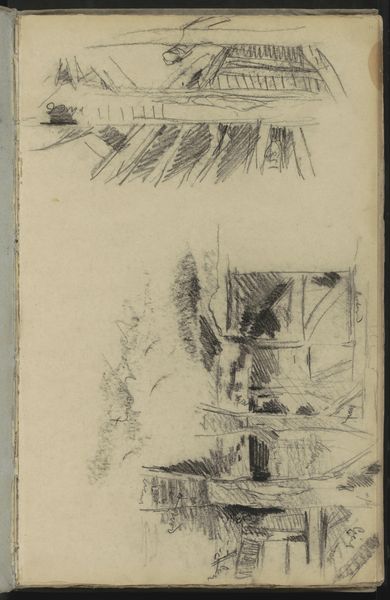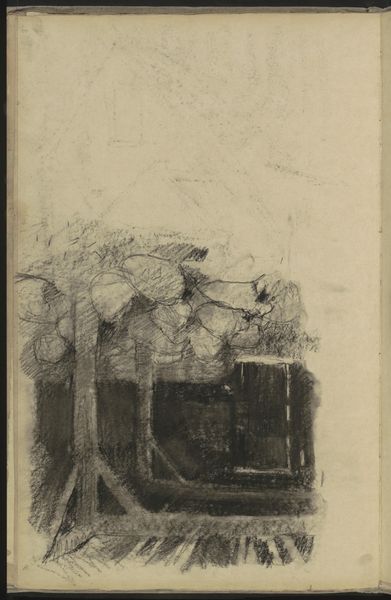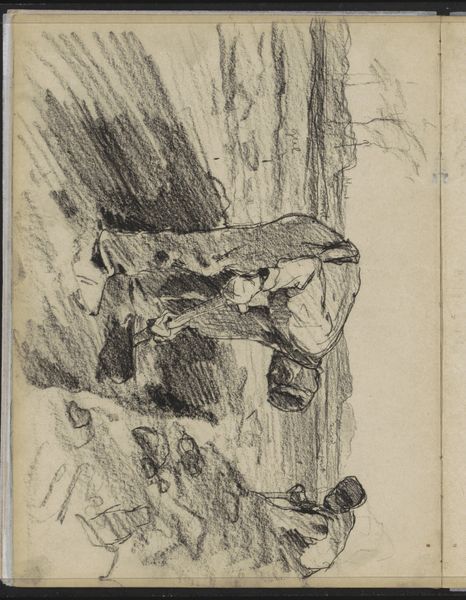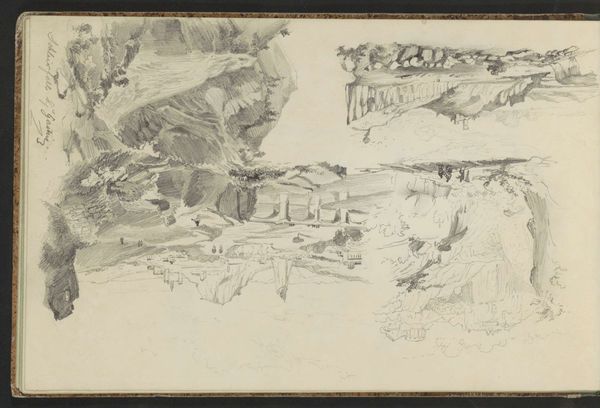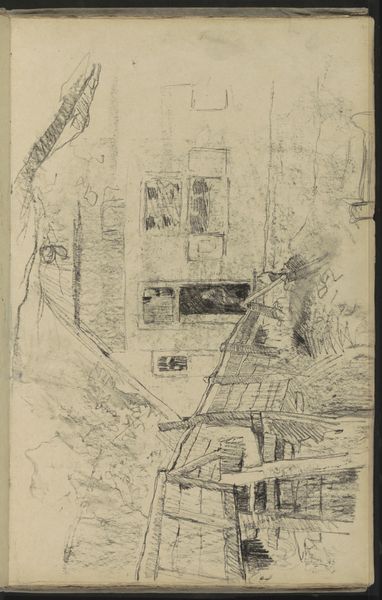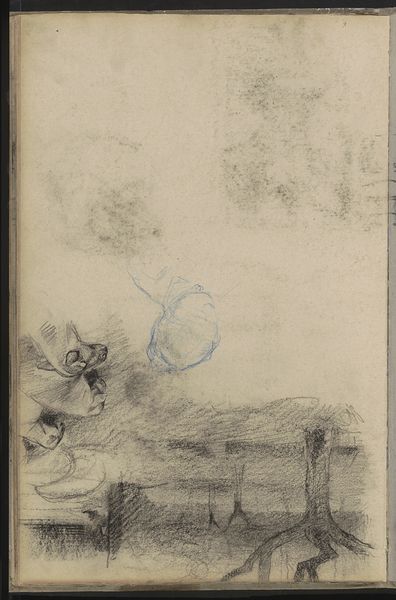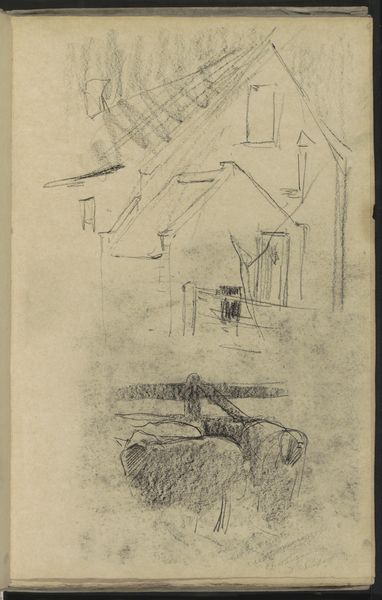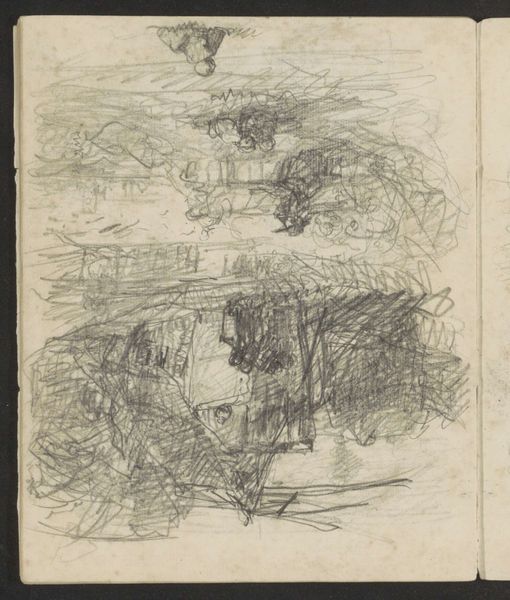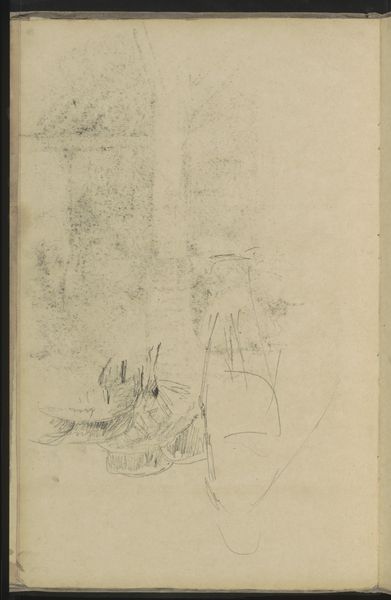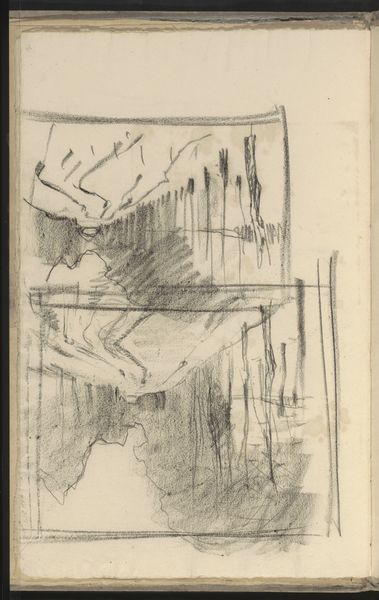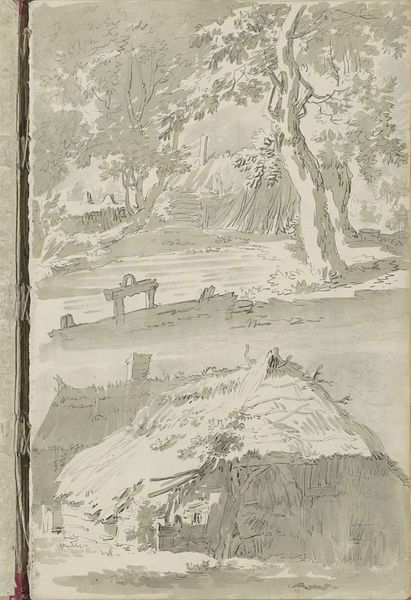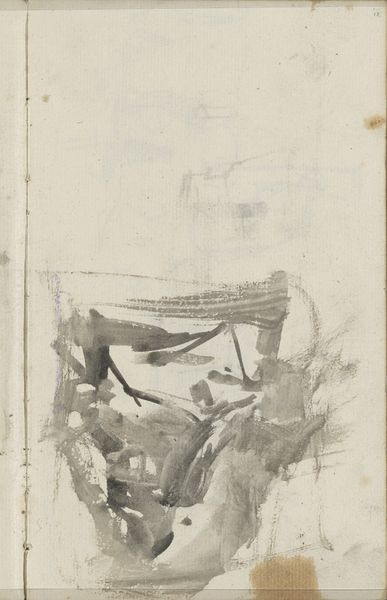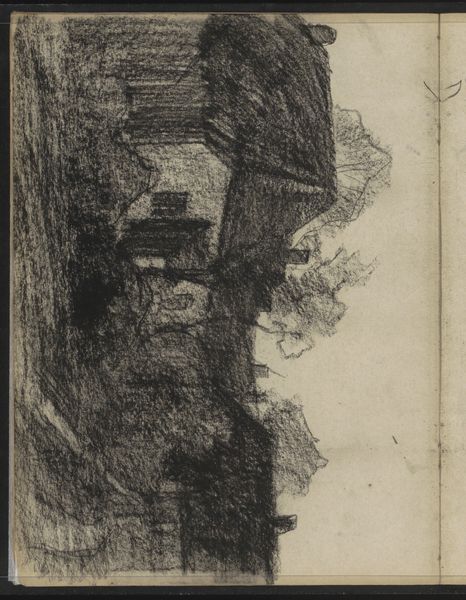
drawing, paper, charcoal
drawing
impressionism
pencil sketch
landscape
paper
sketch
cityscape
charcoal
Copyright: Rijks Museum: Open Domain
Curator: Willem Witsen’s drawing, "Schapen," dating from approximately 1884 to 1887, presents a rather enigmatic scene, wouldn't you agree? Editor: Enigmatic is kind. My first impression is raw immediacy—it feels like a snapshot of thoughts sketched with charcoal and pencil, capturing the fleeting nature of observation itself. The page itself looks worn. Curator: The immediacy absolutely leaps out. But "Schapen," which translates to "sheep," gives us a clue to unlock further meaning here. Note how the shapes, particularly the upper sketches, might represent flocks, symbols of guidance or perhaps even vulnerability. Sheep also carry heavy religious significance of faith, innocence, and following. Editor: That’s interesting. But look at the varied pressures used with the charcoal and pencil. Witsen's mark-making emphasizes process over polished representation; it feels as though he's working out a problem on paper. It’s on paper, by the way—with a rather pronounced tear! I wonder if this was perhaps repurposed, reflecting economic realities or a simple preference for certain paper stock available in that era. Curator: Or maybe the tear itself holds meaning? Fragmentation is a potent symbol. Witsen was part of the Dutch revival of etching—an artistic return to old craft and tradition—but at the same time deeply embedded in impressionistic circles focused on new ways of seeing. Editor: So, a dialogue between old and new, visible right here in the materials and the treatment of the subject. We have these quick, restless sheep, contrasted against a cityscape struggling to materialize on the page, and made with humble materials...it tells a fascinating story about the artist's working process. Curator: Precisely! The dream-like combination invites viewers to participate in interpreting a specific time. We have symbols suggesting communal experience with a modern treatment reflecting on seeing in a rapidly urbanizing world. Thank you, that context regarding materiality illuminates the human condition and how art captures evolving traditions. Editor: Indeed. Analyzing materials can ground those symbolic interpretations and further explore this "dialogue," enriching how we see it.
Comments
No comments
Be the first to comment and join the conversation on the ultimate creative platform.
